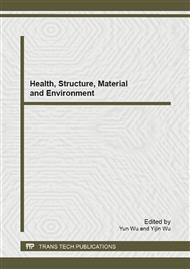p.1011
p.1017
p.1023
p.1029
p.1033
p.1039
p.1043
p.1049
p.1054
BCM Municipal Wastewater Advanced Treatment New Technology
Abstract:
BCM (Biology Cilium Magnetic) technology is a kind of municipal wastewater advanced treatment technology. By using high elastic cilia filler in the oxygen unit, the volume loading of oxygen unit has been greatly increased, and more solubility pollutants could be removed in the oxygen unit. The total phosphorus and suspended substance are deeply removed by magnetic separation coagulation system. The effect of BCM technology is that all pollutants indexes could reach to the first level A standard of GB18918-2002. BCM technology is suitable for AA/O, oxidation ditch and SBR process which needs to be upgraded from the first level B to the first level A standard. The high elastic cilia filler in oxygen unit doesn’t require extra land and extra air. The magnetic separation coagulation system only needs very small land. So BCM technology is suitable for municipal wastewater treatment in China.
Info:
Periodical:
Pages:
1033-1038
Citation:
Online since:
February 2013
Authors:
Price:
Сopyright:
© 2013 Trans Tech Publications Ltd. All Rights Reserved
Share:
Citation:


